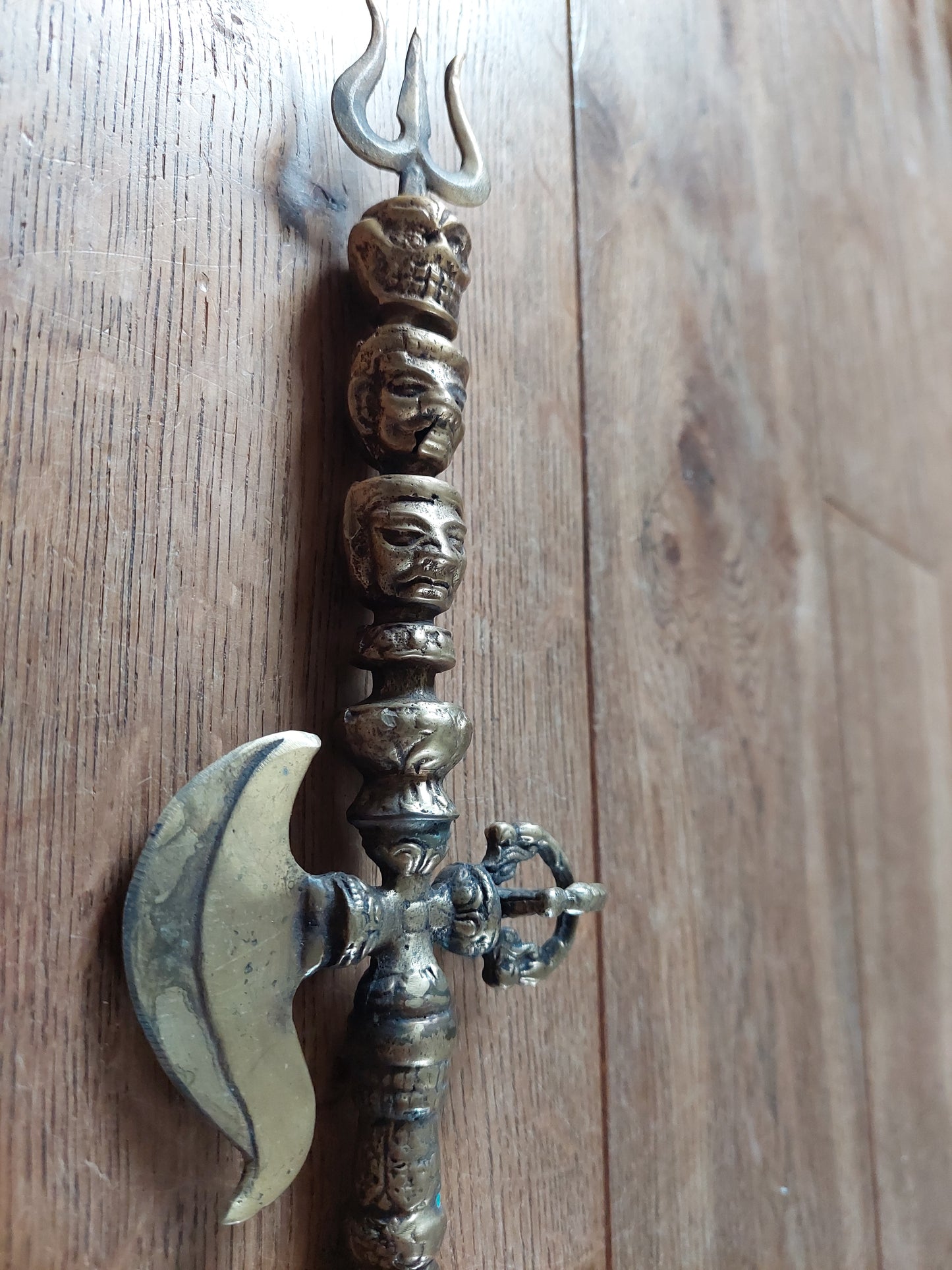Seawolf Shop
Vintage khatvanga #1
Vintage khatvanga #1
Couldn't load pickup availability
Share
A khatvanga is a ritual or ceremonial staff or staff-weapon known in Hinduism and Buddhism, especially in Tantric traditions such as Shaivism and Vajrayana. The form is derived from the typical emblematic staff, worn as an attribute by early Indian Shaivite ascetics called Kapalika. 'Kapalika' translates as 'skull-men' or 'skull-bearers', referring to the fact that these men (originally penitents, who got sentenced to twelve years of penence after killing a Brahmin) traditionally carried a skull-topped trident and a human skull as begging bowl.
Early tantric Buddhists adopted the attributes of these Kapalika into their spiritual practices and thus the khatvanga became more and more of a ceremonial or ritual attribute, where the original Kapalika symbolism got mixed more and more with Buddhist symbolism.
In this Tibetan khatvanga a lot of the early Kapalika symbolism can still be seen; it is still very much a 'weapon-staff', topped with a trident and ending in a phurba. Also very traditional is the adornment of the top of the handle with three human heads; one freshly cut off, one in state of decay and one skull. These three heads hold symbolic meaning on many levels, but overall it can be said that they represent different phases and layers one goes through on the path to pure wisdom, truth and knowledge
This khatvanga is made from bronze-copper alloy. It is 46 centimeters long and weighs a heavy 754 grams. It is from vintage origin and therefore might have some imperfections and damages due to its age and previous usage.
Only one available.



























